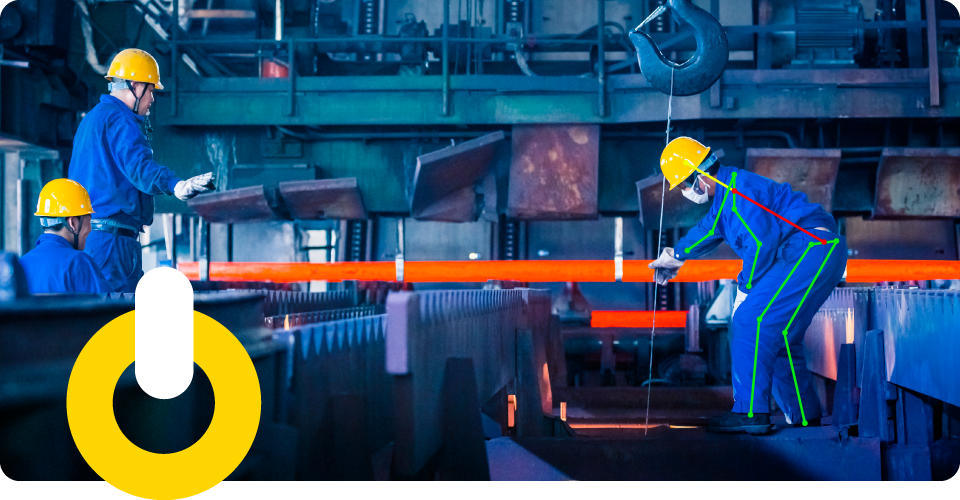Camera-powered Posture Detection in Ergonomics


- 10.12.2022
- Ergonomics, Health & Safety, Industrial

The use of camera-powered posture detection in ergonomics is gaining popularity as a way to monitor and improve the ergonomics of industrial work environments. This technology uses cameras and specialized software to track and analyze the posture of workers in real-time, providing valuable insights into potential ergonomic risks and allowing companies to take corrective actions before injuries occur.
Ergonomics is the study of the interaction between people and their work environments, with a focus on maximizing comfort, safety, and productivity. In industrial settings, ergonomics is particularly important due to the repetitive and physically demanding nature of many jobs. Poor ergonomics can lead to musculoskeletal disorders (MSDs), which are painful and costly conditions that result from the overuse or improper use of the body’s musculoskeletal system.
Traditionally, ergonomic assessments have been performed by trained professionals who manually observe workers and evaluate their posture, equipment, and work processes. This method is effective, but it is time-consuming and it only provides a snapshot of the work environment at a particular point in time.
Camera-powered posture detection, on the other hand, provides a continuous and objective assessment of the ergonomics of a work environment. The technology uses cameras and specialized software to track the movements and posture of workers in real-time, allowing for the detection of potential ergonomic risks. The data collected can be used to identify trends and patterns, allowing companies to make informed decisions about how to improve the ergonomics of their work environments.
One of the key benefits of camera-powered posture detection is that it allows companies to monitor the ergonomics of their work environments in real-time. This enables them to identify and address potential ergonomic risks before they result in injuries or discomfort. For example, if a worker is repeatedly performing a task in a way that puts strain on their neck or shoulders, the technology can detect this and alert the worker or their supervisor, allowing them to take corrective action before an injury occurs.
Another benefit of camera-powered posture detection is that it provides objective data that can be used to evaluate and improve the ergonomics of a work environment. The data collected by the technology can be analyzed to identify trends and patterns, allowing companies to make informed decisions about how to improve the ergonomics of their work environments. For example, if the data shows that a particular workstation is causing ergonomic issues for workers, the company can make changes to the workstation to reduce the risks.
In addition to providing objective data, camera-powered posture detection can also help companies to engage and educate their workers about ergonomics. By providing workers with real-time feedback about their posture and movements, the technology can help them to understand the potential risks associated with their work and how to avoid them. This can help to promote a culture of ergonomic awareness and preventative action, which can reduce the likelihood of MSDs and other ergonomic issues.
Overall, the use of camera-powered posture detection in ergonomics is a valuable tool for improving the safety, comfort, and productivity of workers. By providing real-time feedback and objective data, the technology can help companies to identify and address potential ergonomic risks, ultimately leading to a safer and more efficient work environment.
Knowella AI Inc. offers industry-leading digital solutions to help companies make data-informed operational decisions.
On Knowella platform, you’re be able to automate your health, safety, and quality-focused programs, processes, and workflows! Our people-centric and data-driven solutions boost frontline engagement and well-being, while helping companies save time and money.
- 10.12.2022

Businesses can obtain certification in a standard for occupational health and safety management in order to prevent and reduce onsite work accidents…

OSHA’s record keeping rules require employers to maintain accurate and detailed records of workplace injuries and illnesses.

Explore AI’s role in revolutionizing workplace safety through ergonomics. Learn how it’s shaping the future of safer work environments.